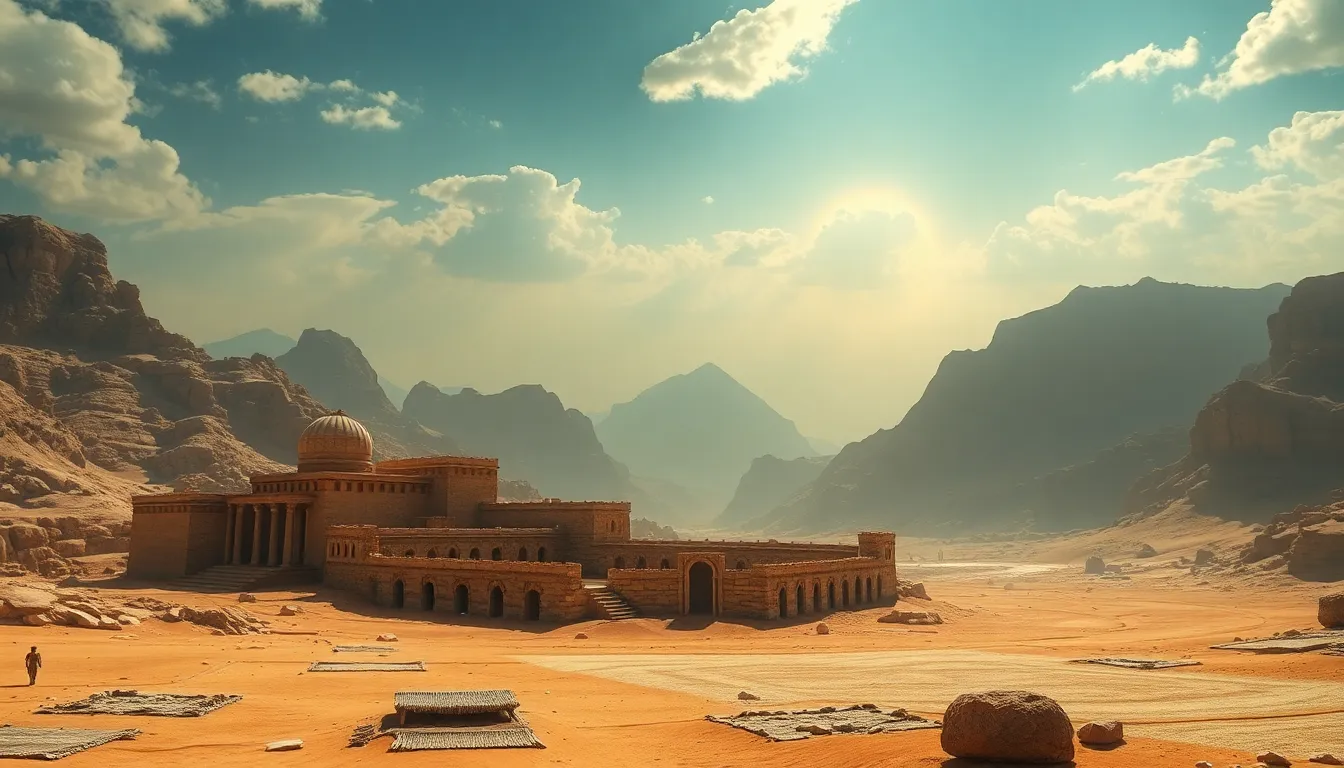The Legend of the Sunken City: Mythical Geography of Egypt
I. Introduction to the Myth of the Sunken City
The legend of the sunken city is a captivating tale that has intrigued historians, archaeologists, and enthusiasts of ancient cultures alike. This myth is deeply rooted in Egyptian culture, representing a lost world and the mysteries that lie beneath the waters of the Nile. The significance of this legend extends beyond mere storytelling; it reflects the ancient Egyptians’ understanding of their geography and their beliefs about life, death, and the divine.
Geographically, Egypt is defined by the Nile River, which has shaped its history and culture. The sunken city is often associated with this vital waterway, symbolizing both destruction and rebirth—a theme prevalent in many Egyptian myths.
II. Historical Background of Ancient Egyptian Civilizations
To understand the legend of the sunken city, one must first delve into the historical context of ancient Egypt. Key periods such as the Old Kingdom, Middle Kingdom, and New Kingdom were marked by significant advancements in architecture, religion, and society.
- Old Kingdom (c. 2686–2181 BCE): Known for the construction of the pyramids and the establishment of a centralized government.
- Middle Kingdom (c. 2055–1650 BCE): A period of stability and cultural flourishing, with a focus on literature and art.
- New Kingdom (c. 1550–1070 BCE): The height of Egyptian power, marked by territorial expansion and monumental architecture.
The geography of Egypt, with its deserts, mountains, and the Nile River, heavily influenced the development of these civilizations. The Nile provided fertile land for agriculture, facilitated trade, and served as a source of myths and legends.
III. The Sunken City in Egyptian Mythology
The sunken city, often referred to in various ancient texts, is described as a once-thriving metropolis that eventually succumbed to the waters of the Nile. Its origins are shrouded in mystery, with some sources suggesting that it was a city dedicated to the worship of the gods.
In Egyptian mythology, the sunken city is frequently linked to the deities of the Nile, particularly:
- Osiris: God of the afterlife, associated with rebirth and regeneration.
- Horus: God of the sky, often depicted as a falcon and connected to kingship.
- Isis: Goddess of magic and motherhood, revered for her role in the life cycle.
This connection to the divine highlights the Egyptians’ beliefs about the relationship between their cities, the natural world, and the gods who governed their fate.
IV. Archaeological Discoveries and Evidence
Archaeological explorations along the Nile have unearthed evidence that may support the existence of a sunken city. Key sites include:
- Thonis-Heracleion: An ancient port city that was submerged in the Mediterranean, providing insights into maritime trade and religious practices.
- Canopus: Another sunken city that housed temples and was known for its connection to the worship of Serapis.
While some findings suggest that these cities were real and once flourished, questions remain regarding their direct connection to the myth of the sunken city. The ongoing research continues to reveal fascinating aspects of ancient Egyptian civilization.
V. The Role of the Nile River in Egyptian Geography
The Nile River is the lifeblood of Egypt, shaping not only the geography but also the mythology of the region. Its importance can be summarized as follows:
- Source of Fertility: The annual flooding of the Nile deposited nutrient-rich silt, enabling agriculture.
- Transportation and Trade: The river served as a major trade route, connecting various regions of Egypt.
- Mythical Significance: The Nile was personified as a god, representing life, death, and rebirth.
The legend of the sunken city is intricately tied to the Nile, embodying the duality of creation and destruction that the river represents.
VI. Cultural Impact of the Legend
The myth of the sunken city has significantly influenced literature, art, and popular culture. References to this legendary city can be found in:
- Literature: Works by authors such as Wilbur Smith and Agatha Christie have drawn upon the allure of ancient myths.
- Art: Artists continue to depict themes of lost civilizations and the mysteries of the Nile.
- Film and Television: Movies and documentaries often explore the legend, sparking public interest in Egyptian history.
This enduring fascination illustrates how myths shape modern perceptions of Egypt, blending historical fact with imaginative storytelling.
VII. Comparative Myths in Other Cultures
The concept of sunken cities is not unique to Egyptian mythology. Other cultures have their own legends, including:
- Atlantis: A legendary island mentioned by Plato, said to have sunk into the ocean.
- Ys: A mythical city in Breton folklore that was submerged by the sea.
- Dwarka: An ancient city in Indian mythology that was said to have been submerged under the sea.
These legends share common themes of loss, the consequences of hubris, and the complex relationship between humanity and nature, reflecting universal concerns across cultures.
VIII. Conclusion: The Enduring Mystique of the Sunken City
The legend of the sunken city remains a powerful symbol in understanding ancient Egyptian society and its geography. Myths like these provide insight into the beliefs, fears, and aspirations of the people who lived thousands of years ago. They serve as a reminder of the mysteries that still lie beneath the surface of our understanding.
As we continue to explore the legacy of the sunken city, it becomes clear that these tales are not just relics of the past but living stories that influence how we perceive Egypt’s rich historical tapestry today.




